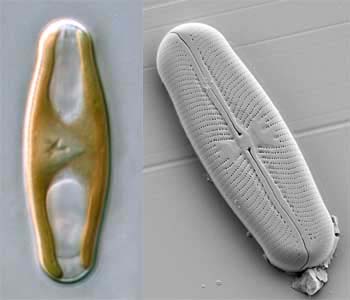This section begins with a description of the cell and cell wall, then looks at the process of cell division, and finishes with an account of the sexual phase of the life cycle and the development of the auxospores.
Biology

Introduction
The structure of the protoplast, the rearrangements of the chloroplast that precede and follow cell division, and the pattern of sexual reproduction, are highly constant in Sellaphora. The evidence currently available indicates that these features may, in combination, be unique to the genus. However, the related genera Fallacia and Rossia have been studied less than Sellaphora and need attention. The status of the genus 'Eolimna' is unclear.
Cell wall structure varies little in Sellaphora and many characteristics are shared with other genera. For example, the raphe structure in Sellaphora is basically the same as in Fallacia, Pinnularia and its allies, and even in distantly related taxa such as Encyonema. The stria stucture, comprising single rows of simple round poroids containing hymenes, is widely distributed among raphid diatoms.

 This site is hosted by the Royal Botanic
Garden Edinburgh.
This site is hosted by the Royal Botanic
Garden Edinburgh.